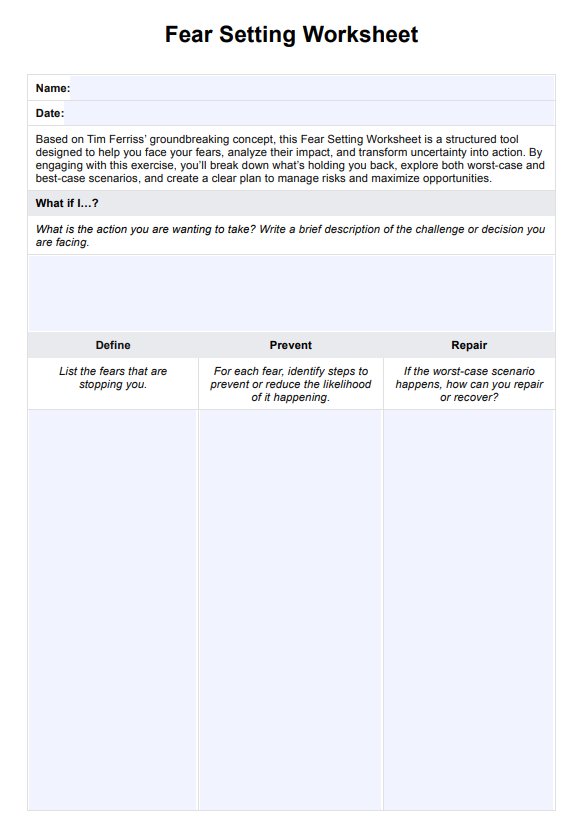The Fear Setting Worksheet is a powerful exercise designed to help individuals break out of the status quo by addressing fears that hold them back. Using a structured fear setting template, it guides users through defining fears, predicting outcomes, and exploring worst-case and best-case scenarios. On the first page, users outline their fears and potential consequences, which leads to clear action planning to mitigate risks and make informed decisions. This process has repeatedly helped individuals and professionals make progress in both personal and business contexts.

Fear Setting Worksheet
Access our Fear Setting Worksheet to help clients identify fears, evaluate outcomes, and create actionable strategies for overcoming obstacles.
Fear Setting Worksheet Template
Commonly asked questions
In high-stress environments, clients often struggle with overwhelming decisions or fear of failure. The Fear Setting Worksheet provides a framework for action calculating, breaking down fears into manageable elements. It also emphasizes partial success, helping clients focus on incremental progress rather than being overwhelmed by perfection. This tool prevents self-destruction caused by overthinking and equips clients with clarity to navigate challenges such as managing big deals or significant life decisions.
The worksheet helps clients assess fears and opportunities clearly when building their own company or acquiring new skills. It is beneficial for professionals considering major steps, such as launching a business or committing to a month-long trip for professional growth. By defining fears and outlining strategies to address worst-case scenarios, clients gain confidence to take calculated risks. This structured process ensures clients are prepared for challenges while remaining focused on their best-case outcomes.
EHR and practice management software
Get started for free
*No credit card required
Free
$0/usd
Unlimited clients
Telehealth
1GB of storage
Client portal text
Automated billing and online payments











